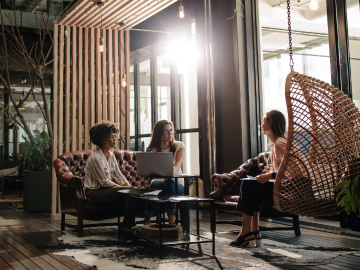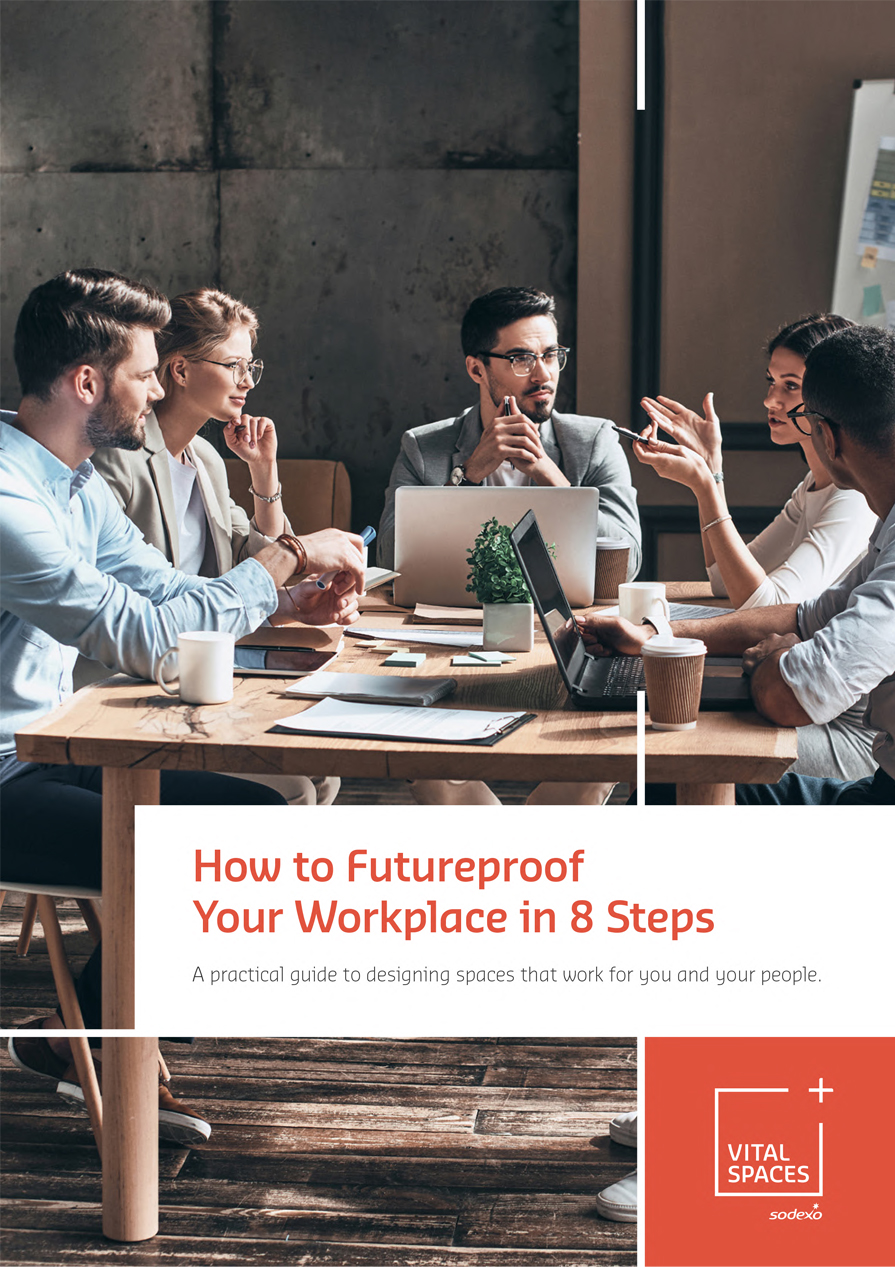Businesses need to go further to create spaces that truly suit the needs of their teams. Agility is becoming a driving force in workplace design, as people’s expectations shift and they demand more from the places they choose to spend their time. But what is an agile workplace, and how can you design and build a space that creates an environment for agile working?
How to Futureproof Your Workplace in 8 Steps
A practical guide to designing spaces that work for you and your people.
The workplace is changing, and employees are expecting more. Companies must work harder than ever to create inspiring and optimised workplaces that invite people in and compel them to interact, socialise, connect and share.
If you’re ready to take that step, download our new guide to uncover how we can help you prepare for and embrace the new era of work.
In a new era of flexible and hybrid working, agility is key. We previously explored the concept of the elastic office and how it adapts to the different needs of a team. For the modern worker, flexibility relates to the ability to work at different hours and different locations, with offices adapting to suit these approaches.
But agile design goes further. It requires a fundamental understanding of the needs of users, and specific choices to meet those needs.
From multifunctional rooms that can be used as social spaces as well as meeting areas, to quiet zones and open plan areas that encourage collaboration, the possibilities reflect the different needs and expectations of a modern workforce.
What is an agile workplace?
Aon’s Benefits and Trends Survey for 2022 found 93% of companies think their employees’ expectations of the work experience are changing. The top two expectations were agile working and more flexible working hours.
Companies cannot afford to ignore their people’s expectations.
Dan Pilling, Workplace Consultant at our partner TSK, explains that organisational agility relates to how easily a space can be reconfigured to accommodate teams of different sizes, as well as the company’s ability to react to changes in the market.
Individual agility, meanwhile, is related to a specific job role. As Dan explains: “It’s a way to describe how mobile you are from an individual perspective. It can be defined by how you like to work, or the kind of work you do.”
The benefits of agile workplaces and culture

It’s an employees’ market and the war for talent is real. Gimmicks are not enough; we need to take a strategic approach to the working environment and design to make people feel comfortable, giving them what they need to thrive.
The same Aon survey found 44% of companies are finding it more difficult to attract new staff, while 41% are struggling to retain their people. Strategic agility in the workplace can address both these issues, by meeting people’s needs and providing what it is that truly makes them want to spend time in the spaces you create.
In our practical guide to workplace design, we explore the effects of an agile, attractive office and the difference this can make to employee retention.
A dynamic, inviting hub that reflects the flexibility people have come to expect from their jobs is more collaborative, better suited to promoting wellbeing and helps deliver a more positive and creative atmosphere. And that is not only a place people are more likely to want to spend their time, but one that leaves a lasting impression on the candidates a business is trying to attract.
What’s more, the strategic thinking and detailed understanding that are required to design and build an agile workplace inevitably impact a business in other ways. Better use of space reduces overall costs as well as environmental impact.
Harpreet Cheema, Head of Workplace Services at Sodexo, notes that the priorities of a company can and should be reflected in its approach to workplace design.
“Your real estate strategy should be an extension of your overall company strategy. They shouldn’t be different,” he says. “If you have a real focus on wellbeing or efficiency, that’s what should be going into your real estate strategy.”
If organisational and individual agility are important to you and the staff you want to retain, you need to back it up through the environment you create.
How to design a truly agile office
So how can businesses deliver agile workplace design that is fit for today’s workforce?
Sodexo believes it all starts with the everyday. When it comes to office design, that means understanding the concrete needs of the people who will actually use the space.
Connect with your employees, clarify the goals for your business, and break strategies down into the short, medium and long term so you can prioritise investment.
There are now many practical solutions that can support agile office space design, including acoustic treatments to offset noise pollution in open-plan offices. Some choices will be appropriate for some workplaces but not for others, so beware adopting trends for trends’ sake. There is no one-size-fits-all approach and spaces that facilitate informal meetings should not necessarily replace quiet areas and rooms for formal working.
Ultimately, businesses that take time to understand the purpose of a space before any decisions are made are most likely to succeed.
Agile working was key to the design process for Sodexo’s new headquarters in Southampton Row, London. Employee experience was at the heart of every decision, and the result is an innovative, inclusive, flexible and sustainable space that reflects our people’s needs.
Download our 8-step guide to futureproofing your own workplace details some of the strategies and thinking behind the project, and the work we are doing to make sure it continues to support our teams.
Spaces where people can thrive
Future Forum’s Pulse report shows 58% of all workers are likely to look for a new job within the next year. When people are dissatisfied with the level of flexibility in their role, that proportion rises to 72%.
As the battle to attract the best talent intensifies, the need to embrace an agile environment is greater than ever. Whether you are designing a space to attract new people or trying to bring existing teams back to the office so they can collaborate more effectively, a thoughtful approach is key.
After all, if you can’t provide a space your employees truly want to be in, they will not be your employees for long.
If you’re ready to take that step, download our new guide which offers practical insight on how to design the right space to bring the best out of your workforce.
Vital Spaces
Is your workplace design is fit for today’s agile workforce?

